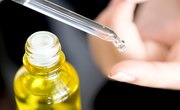
Melanin is the name of the biological pigment that determines the general color of skin and hair in humans. Forms of melanin are responsible for coloration throughout the animal world; for example, wing coloration in birds is produced by melanin. In addition, the cells that produce melanin, called melanocytes, can increase or decrease their levels of melanin production in responses to changes in the external environment (for example, an increase or decrease in sun exposure).
Though melanin is still known chiefly for its role in physiology, researchers have begun to investigate the substance and its derivatives to determine if melanin might have applications in a variety of different industries.
Melanin Synthesis
Melanin is produced by melanocyte cells in the epidermis, or outermost layer of skin (the thicker, tougher layer underneath is called the dermis). These melanocytes lie in the lowermost layer of the epidermis, called the stratum basale or "basal layer." Melanin comes in several subtypes, the most common being eumelanin and a secondary type known as pheomelanin.
Melanin is a chemical of fairly low molecular mass (318.3 g/mol, less than twice that of glucose). Its molecular formula is C18H10N2O4. People with darker skin actually do not have more melanocytes than lighter-skinned people; instead, in people with darker skin, a higher fraction of the genes in melanocytes that are responsible for melanin production is switched on. This means that a lot more melanin is produced per cell in darker-skinned people, not that darker-skinned people have more cells yielding the same level of output. This has important implications in evolutionary anthropology, because it suggests that lighter-skinned European people of today share deep ancestry with people of Africa whose skin remains darker today thanks to different environmental conditions. Many people from Northwestern Europe have lost the ability to develop suntans because the a strand of DNA they have that codes for additional melanin exists but can no longer be activated. Such people's ability to tolerate ultraviolet (UV) light in general is sharply reduced.
Upon microscopic examination, eumelanin appears brown, with a fine-grained appearance. The substance does not scatter light to an appreciable extent, as one expects of something that appears dark. The individual melanin granules have a maximum diameter of about 800 nanometers, or a little under one-millionth of a meter (equivalently, one-thousandth of a millimeter). This distinguishes melanin from some common metabolites of pigments in the blood, which tend to be bigger and scatter light more, and are green, yellow or red-brown in color as opposed to the plain brown of melanin.
The Function of Melanin
Melanin's purpose has nothing to do with human vanity and everything to do with protecting the organism. UV radiation from the sun is a well-known carcinogen, and in high enough exposures can lead to a number of related types of melanoma, which are malignancies of the skin. Melanomas can be fatal; of the approximately 54,000 Americans diagnosed with a melanoma every year, some 8,000 die from it. The risk of malignant melanoma among people of European ancestry is 10 times that of African-Americans.
Some people and animals have very little melanin in their bodies at all. This condition is known as albinism, and results in afflicted persons being more vulnerable to UV sun damage.
Melanin and Skin Pigmentation
When melanin is produced in melanocytes, this pigment is packaged into granules, not unlike the way the green pigment chlorophyll is packaged into specialized intracellular "containers" in plants. When stimulated by UV light, the total level of which increases in most parts of the world at certain times of year while decreasing in others, melanocytes produce more and larger granules, allowing for people's skin to adapt over the course of the summer and become "tan." As noted, however, in some people this ability is genetically limited and in some cases nearly absent, while in other people it is essentially superfluous. You have no doubt seen people who are famously prone to sunburns, and perhaps are one yourself: People described as "fair-skinned" and who are often freckled with a red shade of hair. Such individuals as a group have the least-effective defenses against UV radiation and are advised with special insistence to avoid going out in the sun without sunscreen, which can filter out harmful UV radiation to a significant extent.
Skin Pigmentation and Human Evolution
While too little melanin in the skin can expose individuals to higher risk of sunburn and skin malignancies, people with unusually high levels of melanin in the body may be predisposed to vitamin D deficiency. This is because the main source of this vitamin in the body is actually a natural vitamin D precursor that is converted to the active form of the vitamin under the action of sunlight. Since darker surfaces tend to reflect rather than absorb UV radiation, people with darker skin absorb a smaller fraction of the UV radiation they are exposes to than others. In a sense, this represents one of countless evolutionary trade-offs on display in the world of living things.
When the descendants of modern humans first moved into open spaces from under the cover of trees to hunt and seek water, they exposed themselves to more sunlight. In the process, they obviously had to be able to tolerate not just more light, but the additional heat that went with it. In order to keep cool in the context of greater exposure to sun, this meant being able to sweat more profusely and effectively. To pepper the skin with a higher density of sweat glands, something else had to go, and that "something" was hair. Humans clearly still have hair on their arms, legs and trunks (some considerably more than others) but compared to other apes, humans have lost virtually all of their body hair. As a result, the newly sweat-capable skin of early humans was left more susceptible to damage from the sun. This is turn spurred the increase in melanin granule deposits now observed at tropical latitudes.
Vitamin D deficiency has been mentioned as an unwanted consequence of too much melanin in skin. Vitamin D is required for the intestines to most efficiently absorb the elements calcium and phosphorus. Both of these are required for the proper growth and maintenance of bones. Although some vitamin D can be derived from dietary sources such as egg yolks and certain fish, 90 percent is synthesized in the skin from cholesterol derivatives. Not only is vitamin D therefore needed for integrity of the skeleton, it may also be helpful in preventing some forms of cancer.
Other Uses of Melanin
In 2017, a group of scientists at the University of California at San Diego received a $7.5 million grant to study potential uses of melanin that have been theorized about but never formally pursued. The scientists involved in the project hoped to learn the sequence of reactions involved in melanin synthesis at a deeper level than had been pursued previously, and to understand more about the different types of melanin themselves in the hope of pursuing the synthesis of related chemicals with some of the known protective capabilities melanin has. The ability to offer non-biological materials some of the same basic protections from sun damage that melanin gives living things would clearly be an asset in various types of industries, as solar damage to paint and various services is a near-universal concern.
References
About the Author
Kevin Beck holds a bachelor's degree in physics with minors in math and chemistry from the University of Vermont. Formerly with ScienceBlogs.com and the editor of "Run Strong," he has written for Runner's World, Men's Fitness, Competitor, and a variety of other publications. More about Kevin and links to his professional work can be found at www.kemibe.com.
